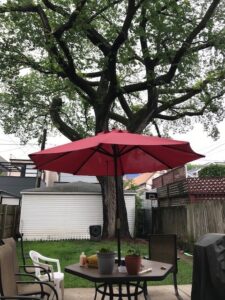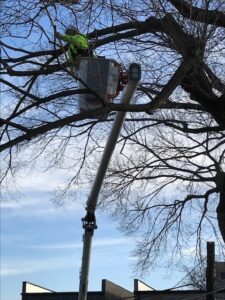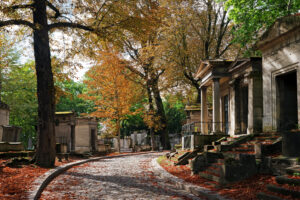 I am a tree lover, but not a tree hugger. I think there is a difference, although I do not wish to demean tree huggers in any way. I am simply coming from a different place, viewing matters through a different lens.
I am a tree lover, but not a tree hugger. I think there is a difference, although I do not wish to demean tree huggers in any way. I am simply coming from a different place, viewing matters through a different lens.
I can understand the emotional response that trees elicit from huggers. I appreciate the beauty that nature provides and feel moved upon seeing a forest or even the single American elm that towers over our backyard. I had already assumed that this tree, which we protected when we built our home in 1994 by adjusting the location of the garage and shortening its apron into the alley behind us, was at least a century oldwhen an arborist from Davey Tree, which prunes it periodically, confirmed my guess. At its ripe but healthy old age, it has watched many of us humans move in and out of the neighborhood and seen houses built and torn down. It has survived a dozen serious blizzards and major windstorms, such as the August 2020 derecho that brought 100-mph winds and two tornadoes to the city of Chicago. Having turned 73 just before Christmas, I can anticipate the possibility that the tree may yet outlive me. I hope it does; I would hate to have the responsibility of tearing it out if it dies.
But a great deal of my admiration for trees is intellectual and analytical. As an urban planner, I have come to appreciate their role in the city. I led a project for the American Planning Association (APA), published in 2009, that examined in depth how planners could prioritize the role of trees in helping us all build prosperous, beautiful, and environmentally healthy communities. As with any serious research project, I learned much from piloting that effort. I gained some in-depth knowledge of the various ways in which trees filter air and water pollution, reduce stormwater runoff and hence flooding, enhance property values, and temper human aggression, among other benefits to human society. We are fools when we think we can live without trees. Their presence helps humanize us.
I will not regurgitate here all the data that are available to confirm these statements. You can start just by downloading Planning the Urban Forest. I am making a point about my own perspective, which is built heavily upon science while honoring my own environmental instincts, which run deep. Half a century ago, I led the first student environmental organization at Cleveland State University. Instincts and intellectual curiosity often work together.
What prompted this reflection was a recent article from the New York Times. It actually concerned the gradual changes that have transformed a Parisian cemetery, Pere-Lachaise, opened in 1804. It houses, if that is the right verb, the remains of numerous artists and authors including Marcel Proust, Frédéric Chopin, and Oscar Wilde, or if you prefer more modern and volatile types, Jim Morrison of The Doors. Once tended like a golf course, it underwent a transformation after a city directive in 2011 encouraged cemeteries to stop using herbicides. In just a decade, nature has reclaimed much of Pere-Lachaise. Trees have grown, the canopy shades the grounds, birds nest in the trees, and the corpses in coffins share the land with the squirrels and foxes. A funny thing happened on the way to this green restoration: The cemetery became significantly more popular with people. Visitors now total more than 3 million per year. Nature and people are learning to live together.
There is a religious element that appeals to me as a Lutheran. Martin Luther himself was a mixed bag in many ways. He did not always know when to pause and think before he wrote, but there are numerous pearls of wisdom that persist nonetheless, aside from his theological disputations.
About 12 years ago, I believe, I was invited to speak at the annual conference of the Mississippi Chapter of APA—not once but twice. The first presentation involved contentious issues of hard-core planning, focused on hazard mitigation. The location, Ocean Springs, sits on the Mississippi Gulf Coast, which had experienced the worst storm surges of Hurricane Katrina in 2005. It was the second presentation that I found more inspirational because it focused on the then recently released APA report on urban forestry. During the audience questions, there was some inquiry about motivation for advancing the subject matter. Instead of offering a scholarly response, I offered my religious affiliation as an excuse for quoting Luther. When asked once what he would do if he knew the world would end tomorrow, he is reputed to have replied simply that he would “plant a tree.” That sort of defiant commitment to hope, and the recognition that trees are a potent symbol of hope, I said, was what motivated me. It is what truly makes us human.
I want to make two things clear as this new year begins and I edge ever closer to an eventual and inevitable demise. First, I have left instructions for my cremation because, in the 21st century and devoid of any superstitions about how our remains are handled, I wish not to occupy any real estate after I die. I do not need to take up space in in a local cemetery. God will decide what to do with my spirit. Second, however, I do want my successors and friends to take time during or after a memorial service to plant a tree.
Please, just plant a tree and say a simple prayer. No more powerful message is needed. Trees will speak for themselves.
Jim Schwab


